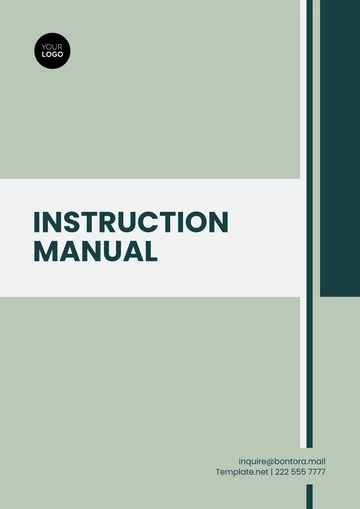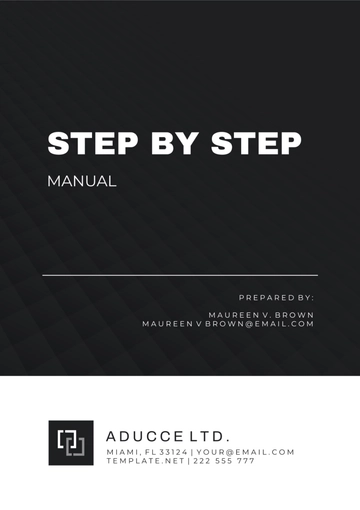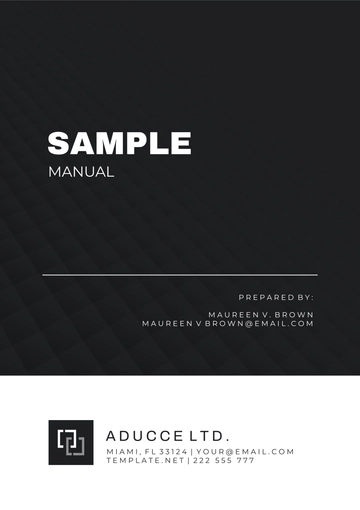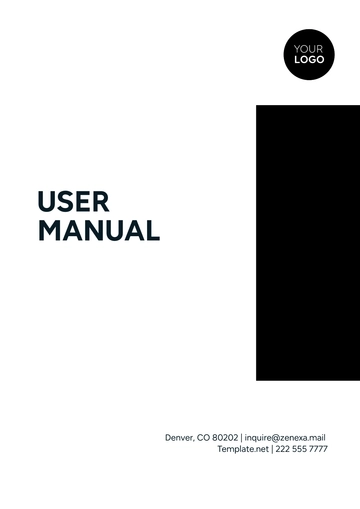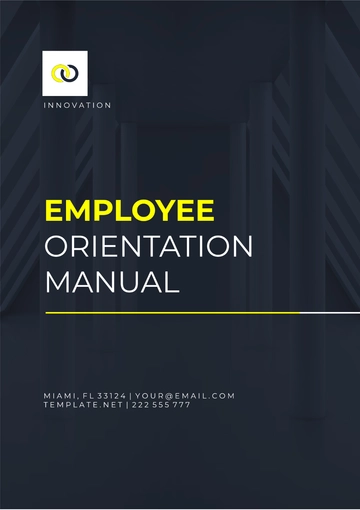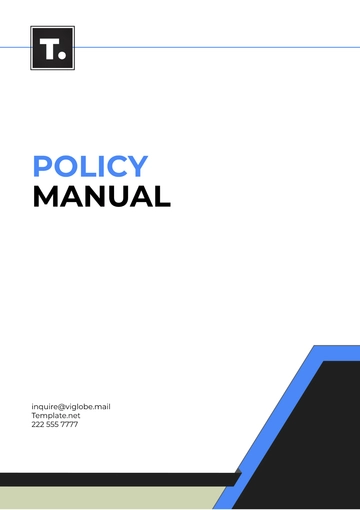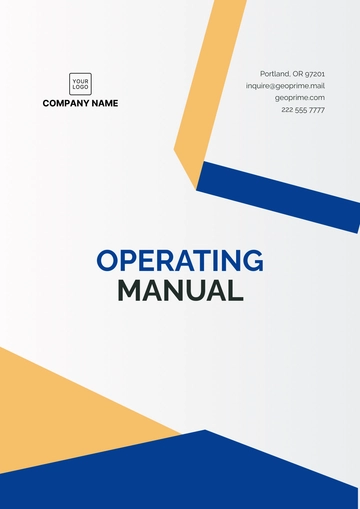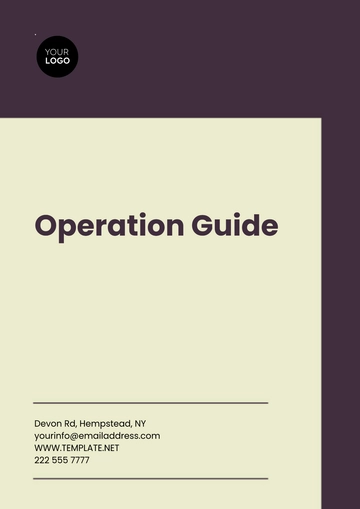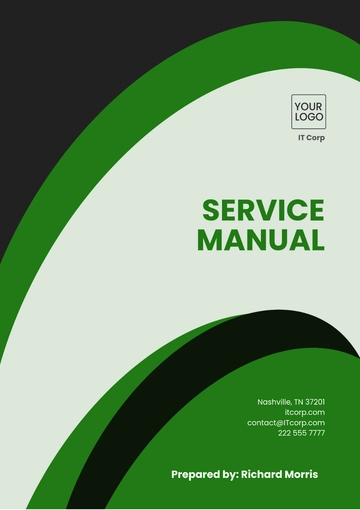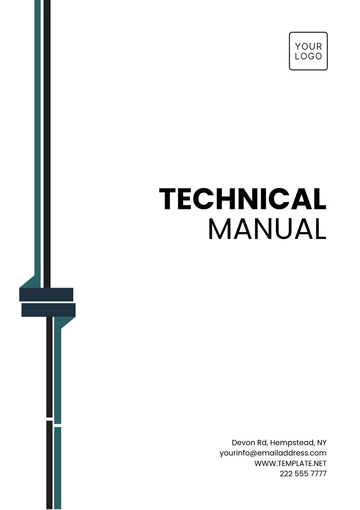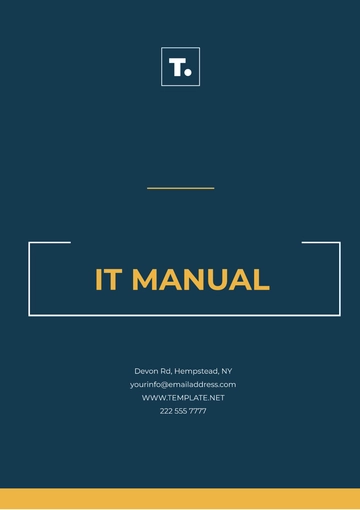Free Financial Compliance Training Manual
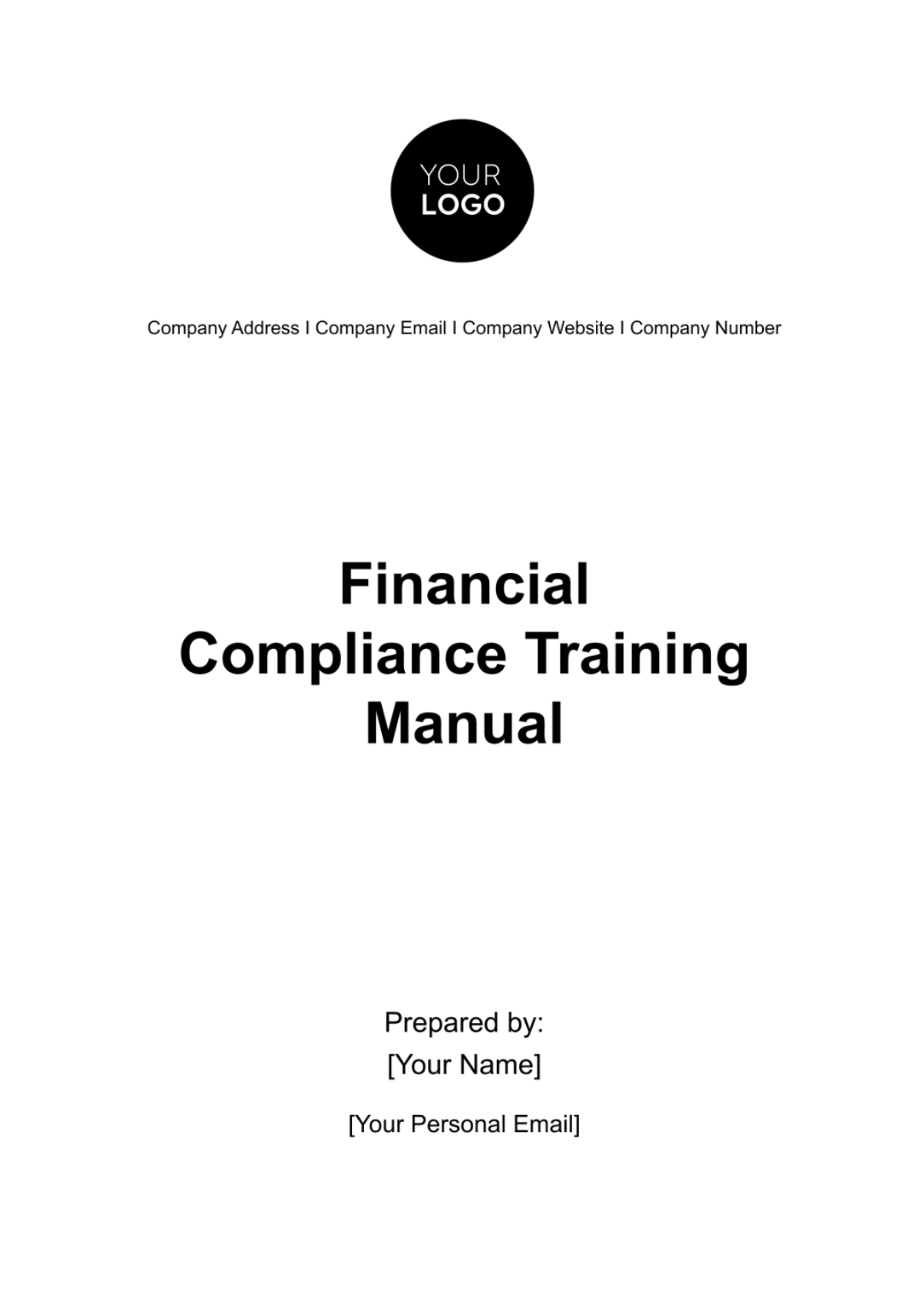
Introduction
Overview of Financial Compliance
Financial compliance is a fundamental aspect of corporate governance that ensures [Your Company Name] operates within the bounds of legal and ethical standards. It encompasses a wide range of activities, from adhering to financial laws and regulations to maintaining high standards of ethical conduct in financial reporting and operations. This adherence is not merely a legal obligation but a commitment to transparency, accountability, and integrity.
In global finance, regulations continuously evolve to address emerging challenges and risks. For instance, laws like the Sarbanes-Oxley Act and the Dodd-Frank Act in the United States, or the GDPR in Europe, reflect evolving standards in financial reporting, investor protection, and data privacy. Compliance with these regulations is critical to avoid legal penalties, safeguard shareholder interests, and maintain customer trust.
Financial compliance also plays a crucial role in internal management. It involves establishing robust internal controls to prevent fraud, errors in financial reporting, and mismanagement of funds. This includes regular financial audits, risk assessments, and implementing a transparent financial reporting system.
Purpose of the Manual
The purpose of this Financial Compliance Training Manual is multifaceted. Primarily, it serves as an educational resource for all employees of [Your Company Name], providing them with a comprehensive understanding of the financial compliance landscape. The manual outlines our company’s policies, procedures, and best practices in financial compliance, ensuring that every team member, regardless of their role, is informed and equipped to uphold our standards.
Additionally, this manual is a practical guide for daily operations. It details the processes for routine compliance tasks such as financial reporting, risk assessments, and audits. It also serves as a reference for handling complex compliance scenarios, offering step-by-step guidance on navigating legal requirements and company policies.
By familiarizing themselves with this manual, employees will not only contribute to the legal and ethical integrity of [Your Company Name] but also empower themselves to make informed decisions and take proactive steps in their roles. This manual is a living document, subject to updates and revisions as laws and best practices evolve, ensuring that [Your Company Name] remains at the forefront of financial compliance excellence.
Legal Framework
In sectors involving financial operations, adhering to a robust legal framework is not just a requirement but a cornerstone of corporate responsibility and integrity. This section of the Financial Compliance Training Manual for [Your Company Name] is dedicated to elucidating the key legislations and regulations that govern our financial practices. Understanding these legal foundations is essential for ensuring that our company operates within the bounds of the law, thereby upholding our commitment to ethical practices and maintaining the trust of our stakeholders.
We explore the significant laws that directly impact our financial operations. These laws have been enacted to promote transparency, accuracy, and accountability in the financial reporting and operations of corporations. We will delve into the specifics of each legislation, examining its primary objectives, the responsibilities it imposes, and its relevance to the operations at [Your Company Name].
Following the overview of key legislations, the chapter will outline [Your Company Name]'s policy on compliance. This policy forms the bedrock of our approach to legal adherence, shaping the way we conduct our financial activities and setting the standard for employee responsibilities and conduct in relation to financial compliance.
Key Legislation and Regulations
Legislation | Description | Relevance to [Your Company Name] |
|---|---|---|
Sarbanes-Oxley Act | Regulations on financial practices and corporate governance | Ensures accurate financial reporting |
Dodd-Frank Act | Financial regulatory reform following the 2008 crisis | Increases transparency in financial operations |
Company Policy on Compliance
At [Your Company Name], compliance with these and other relevant financial legislations is not optional but mandatory. Our policy dictates a strict adherence to all legal standards, ensuring that every employee, from the executive board to new hires, understands and complies with the necessary financial legislation. This commitment to legal compliance is integral to our operations, underscoring our dedication to legal, ethical, and transparent business practices.
Roles and Responsibilities
Clearly defined roles and responsibilities are essential for the effective functioning of [Your Company Name]. This chapter delineates the structure of the Compliance Team and the individual responsibilities within the organization. Understanding these roles and their respective duties is crucial for maintaining a robust compliance framework and ensuring that all activities adhere to the required standards and regulations.
Compliance Team Structure
Position | Role | Contact Information |
|---|---|---|
Chief Compliance Officer | Oversees compliance program | [Your Company Email] |
Financial Analyst | Monitors and reports on financial activities | [Your Company Email] |
Individual Responsibility
The responsibility for financial compliance does not solely rest on the shoulders of the Compliance Team. It is a company-wide obligation that extends to each employee at [Your Company Name]. Every member of our team, regardless of their position, is expected to be familiar with the financial regulations relevant to their role and to adhere to them diligently. This includes:
Understanding Compliance Policies: Employees must understand the compliance policies and procedures as they relate to their specific roles. This understanding is crucial for recognizing and avoiding actions that may breach compliance standards.
Regular Training: Employees are required to participate in regular training sessions to stay updated on new regulations and changes in compliance procedures.
Reporting Concerns: All employees are encouraged to report any concerns or suspicions of non-compliance. [Your Company Name] fosters an environment where such communications are treated with seriousness and confidentiality.
By assigning clear roles and emphasizing individual responsibility, [Your Company Name] ensures a comprehensive approach to financial compliance, where every team member is an active participant in upholding the legal and ethical standards that govern our financial operations.
Risk Management
Effective risk management is vital for [Your Company Name]'s financial stability and compliance. This section focuses on identifying various financial risks and outlines the procedures for assessing and mitigating them.
Identifying Financial Risks
Key Financial Risks:
Market Volatility: Impacts on investment and currency rates.
Credit Risks: Non-repayment of loans or contractual obligations.
Operational Risks: Failures due to technical issues or management errors.
Liquidity Risks: Inability to quickly liquidate assets.
Compliance Risks: Legal or regulatory repercussions due to non-compliance.
Proactive Approach:
Our approach involves continuous monitoring of market trends and regulations, and regular internal reviews.
Risk Assessment Procedures
Process:
Identification: Documenting potential risks facing the company.
Analysis: Evaluating the likelihood and impact of these risks.
Evaluation: Prioritizing risks for action.
Treatment: Developing strategies to mitigate risks.
Monitoring: Regular reviews to update the risk management process.
Stakeholder Involvement:
The process involves various stakeholders, including department heads and financial analysts, to ensure diverse perspectives and comprehensive risk understanding.
[Your Company Name] commits to rigorous risk management to ensure financial resilience and adherence to compliance standards.
Compliance Procedures
Compliance procedures form the backbone of [Your Company Name]'s strategy to uphold financial integrity and adhere to regulatory standards. This section outlines the essential processes for reporting, documentation, auditing, and monitoring, which are crucial for maintaining transparency and accountability in all financial matters.
Reporting and Documentation
Key Practices:
Accurate Recording: Every financial transaction must be accurately recorded. This includes sales, purchases, loans, investments, and other financial activities.
Detailed Documentation: Maintaining comprehensive documentation is crucial. This includes contracts, receipts, bank statements, and other relevant financial records.
Regular Updates: Financial records should be updated regularly to reflect current transactions and financial status.
Accessibility: Ensure that relevant personnel have access to these documents for review, analysis, and decision-making purposes.
Purpose:
The purpose of stringent reporting and documentation is not only to comply with legal standards but also to provide a clear financial picture for stakeholders and to facilitate informed decision-making.
Auditing and Monitoring
Regular Audits:
Internal Audits: Conducted by our internal audit team, these focus on reviewing and assessing the effectiveness of financial processes and compliance with internal policies.
External Audits: Performed by independent auditors, these provide an objective assessment of our financial reporting and compliance with external regulations.
Monitoring Process:
Continuous Monitoring: Ongoing scrutiny of financial activities to identify and address any irregularities or deviations from established procedures.
Compliance Checks: Regular checks to ensure adherence to legal standards and internal policies.
Feedback and Improvement: Using audit findings to improve financial processes and compliance mechanisms.
Outcome:
Through rigorous auditing and continuous monitoring, [Your Company Name] ensures that financial activities are conducted in compliance with both internal policies and external regulatory requirements, thereby safeguarding the company’s financial health and reputation.
Training and Development
Mandatory Training Sessions
At [Your Company Name], we recognize the importance of keeping our workforce informed and updated on financial compliance matters. To this end, regular mandatory training sessions are conducted for all employees. These sessions cover a range of topics including new regulations, updates to company policies, and emerging best practices in financial compliance. The aim is to ensure that every team member, irrespective of their role, possesses a solid understanding of the compliance landscape and how it affects their work.
Continuing Education
In addition to mandatory training, [Your Company Name] promotes a culture of continuous learning and professional development. Employees are encouraged to engage in educational activities such as seminars, workshops, and online courses related to financial compliance. This ongoing education helps in keeping our team abreast of the latest developments in the field and enhances their skills, thereby contributing to the overall compliance posture of the company.
Handling Non-Compliance
Identifying Breaches:
Identifying instances of non-compliance is a critical aspect of our compliance framework. This is primarily achieved through regular audits, meticulous reports, and an open channel for whistleblowing. These mechanisms enable the timely detection of any deviations from established compliance standards.
Reporting and Corrective Actions:
Upon identification of a non-compliance issue, it is imperative that it be reported immediately to the compliance team. Prompt reporting allows for swift action to rectify the situation. Corrective actions may include additional training for the involved personnel, revision of policies to prevent future occurrences, and, if necessary, disciplinary measures in accordance with company policies. This approach ensures that non-compliance issues are addressed effectively and serve as a learning opportunity for continuous improvement.
Technology and Compliance
Utilizing Compliance Software
In the digital age, technology plays a crucial role in managing and maintaining financial compliance. [Your Company Name] utilizes various software tools to streamline compliance-related tasks. These tools aid in monitoring financial activities, reporting in a timely and accurate manner, and conducting thorough data analyses. The use of technology not only enhances efficiency but also provides a more robust framework for managing compliance responsibilities.
Data Security and Privacy
A key component of our compliance strategy is ensuring the security and privacy of financial data. This involves strict adherence to data protection regulations and implementing best practices in information security. Measures such as encryption, access controls, and regular security audits are employed to safeguard sensitive financial information against unauthorized access and breaches. By prioritizing data security and privacy, [Your Company Name] not only complies with regulatory requirements but also fosters trust among clients and stakeholders.
Emergency Procedures
In the event of a financial emergency, such as a data breach or a significant compliance failure, it is crucial for [Your Company Name] to have well-established emergency procedures. These procedures are designed to ensure a swift and effective response, minimizing potential damage and restoring normal operations as quickly as possible. This chapter outlines the key emergency contact information and the immediate steps to be taken in the face of a financial emergency.
Emergency Contact Information
In any financial emergency situation, the following key contacts should be reached immediately:
Role | Contact Information |
|---|---|
Chief Compliance Officer | [Your Company Phone Number] |
IT Security Team | [Your Company Phone Number] |
Immediate Steps and Notifications
In the event of a financial emergency, such as a data breach, the following immediate steps should be taken:
System Security: The first priority is to secure all systems to prevent further damage. This includes isolating affected systems, changing passwords, and implementing additional security measures as needed.
Assessment of the Situation: Quickly assess the scope and impact of the emergency to understand the extent of the breach or compliance failure.
Notification of Relevant Authorities: Depending on the nature and severity of the incident, it may be necessary to notify law enforcement, regulatory bodies, and other relevant authorities.
Internal Communication: Inform key internal stakeholders, including senior management and relevant departments, about the incident and the steps being taken.
External Communication: If necessary, prepare to communicate with external parties, such as clients, partners, and the public. This should be done in a manner that is transparent, responsible, and in line with legal obligations.
Containment and Mitigation: Take steps to contain the emergency and mitigate its impact. This may involve working with IT, legal, and other relevant teams.
Documentation: Document all actions and findings related to the emergency. This documentation will be crucial for post-incident analysis and for demonstrating compliance with response protocols.
By following these immediate steps and ensuring effective communication, [Your Company Name] can effectively manage financial emergencies, minimizing their impact and ensuring a swift return to normal operations.
- 100% Customizable, free editor
- Access 1 Million+ Templates, photo’s & graphics
- Download or share as a template
- Click and replace photos, graphics, text, backgrounds
- Resize, crop, AI write & more
- Access advanced editor
Template.net offers a meticulously crafted Financial Compliance Training Manual Template, designed to streamline your compliance training processes. This editable template provides a comprehensive framework for your organization, ensuring regulatory adherence and employee competence. Elevate your financial compliance training with this user-friendly, customizable resource using our AI editor tool, saving you time and resources. Boost compliance and efficiency effortlessly with Template.net!
